
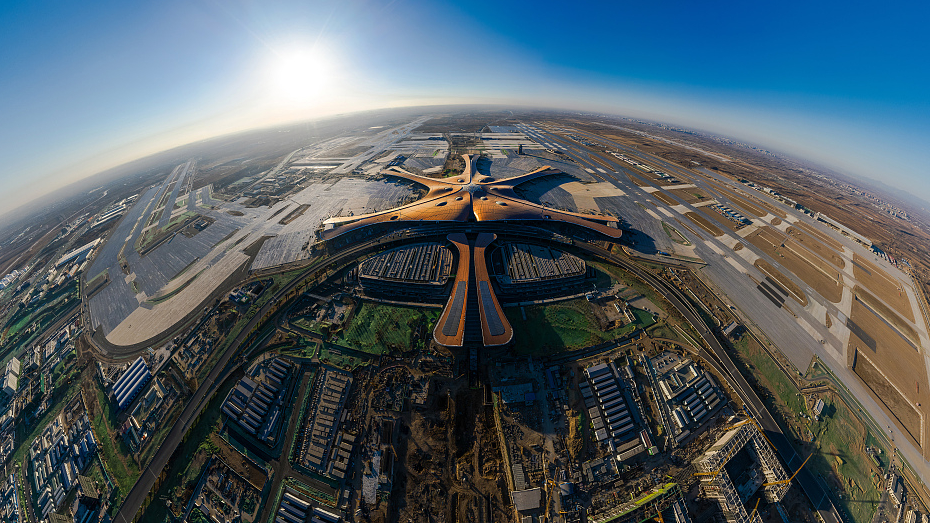
VCG Photo
With the construction of the Beijing Daxing International Airport completed on Sunday, the formal opening day is around the corner.
The new airport is not just about the eye-catching architecture, the unprecedented terminal area, and the sophisticated design. Multiple cutting-edge technologies in the new airport will make traveling a breeze.
So what kinds of intelligent services can we expect from the red "starfish"?
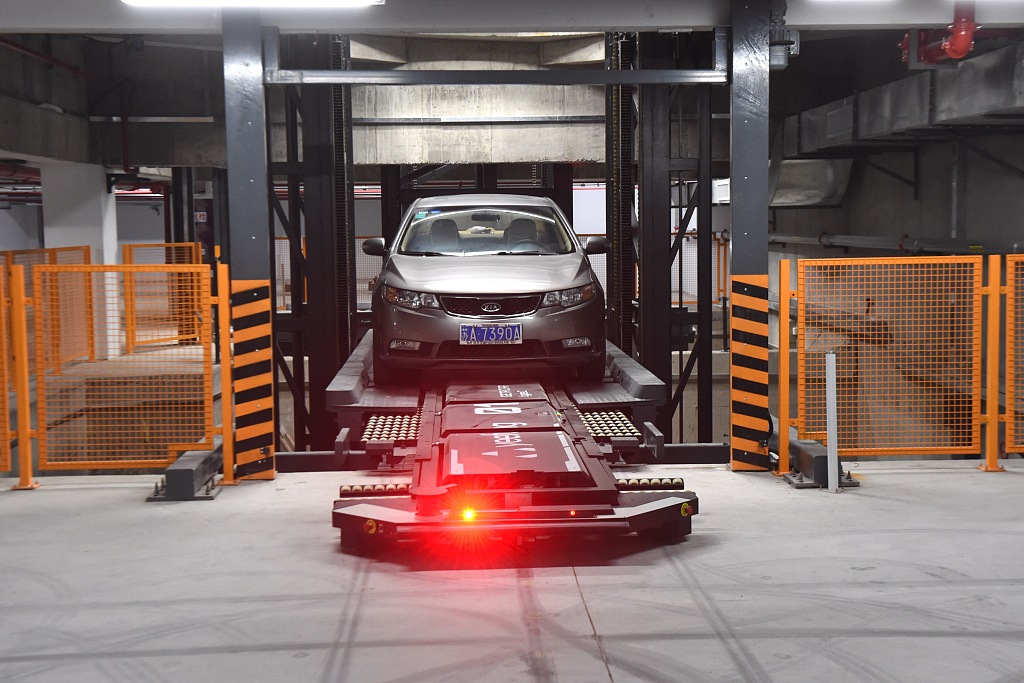
Intelligent robotic parking system /VCG Photo
Intelligent robotic parking system
Tired of finding parking at the airport? it's time to say goodbye to that nightmare.
The Beijing Daxing International Airport is expected to be the first in the country to implement a trial run of an automated parking system that will reduce the parking time to within one minute.
Drivers only need to park their car on a platform, and a robot will lift it and transport the car to an empty spot.
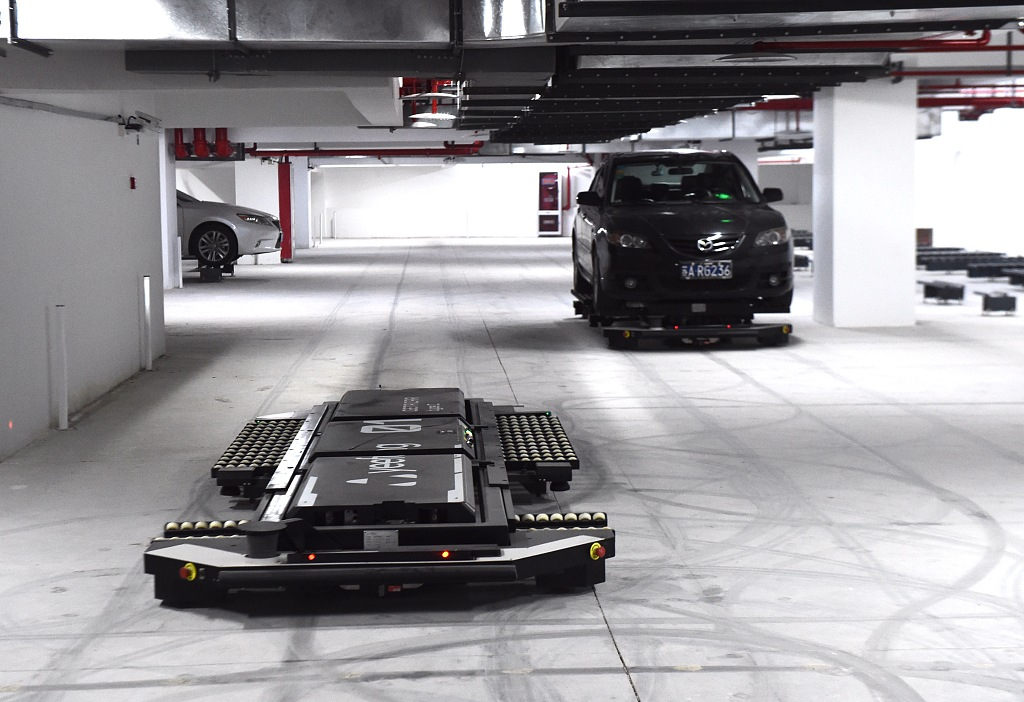
Intelligent robotic parking system /VCG Photo
"The system is equipped with 132 parking spaces, 6 parking rooms and 8 robots," said Ba Gen, the chief engineer of the Beijing Capital International Airport's IT department.
"The environment-friendly robots can lift up to 3.5 metric tons," Ba added. "They produce zero emissions and can work for up to six hours on a single charge, before automatically making their way to their charging station."
Robots are taught to dodge obstacles in real time, and avoid getting dents or scratches from parking lot mishaps, the engineer explained.
When the customer wants to collect their car, they just need to scan their parking ticket or enter their plate number using a terminal, which tells them where to go to collect their car. It takes less than two minutes for the car to be delivered, cited Asia Times.
Futuristic boarding experience
Apart from the intelligent parking system, high-tech solutions can be seen everywhere.
Facial recognition technology aiming to speed up the security check and boarding processes has finished its trial run recently. Passengers are expected to have a paperless self-service experience from the terminal entrance to their boarding gate.
It will first be applied for domestic flights, and then widely adopted to all flights, the new airport website said.
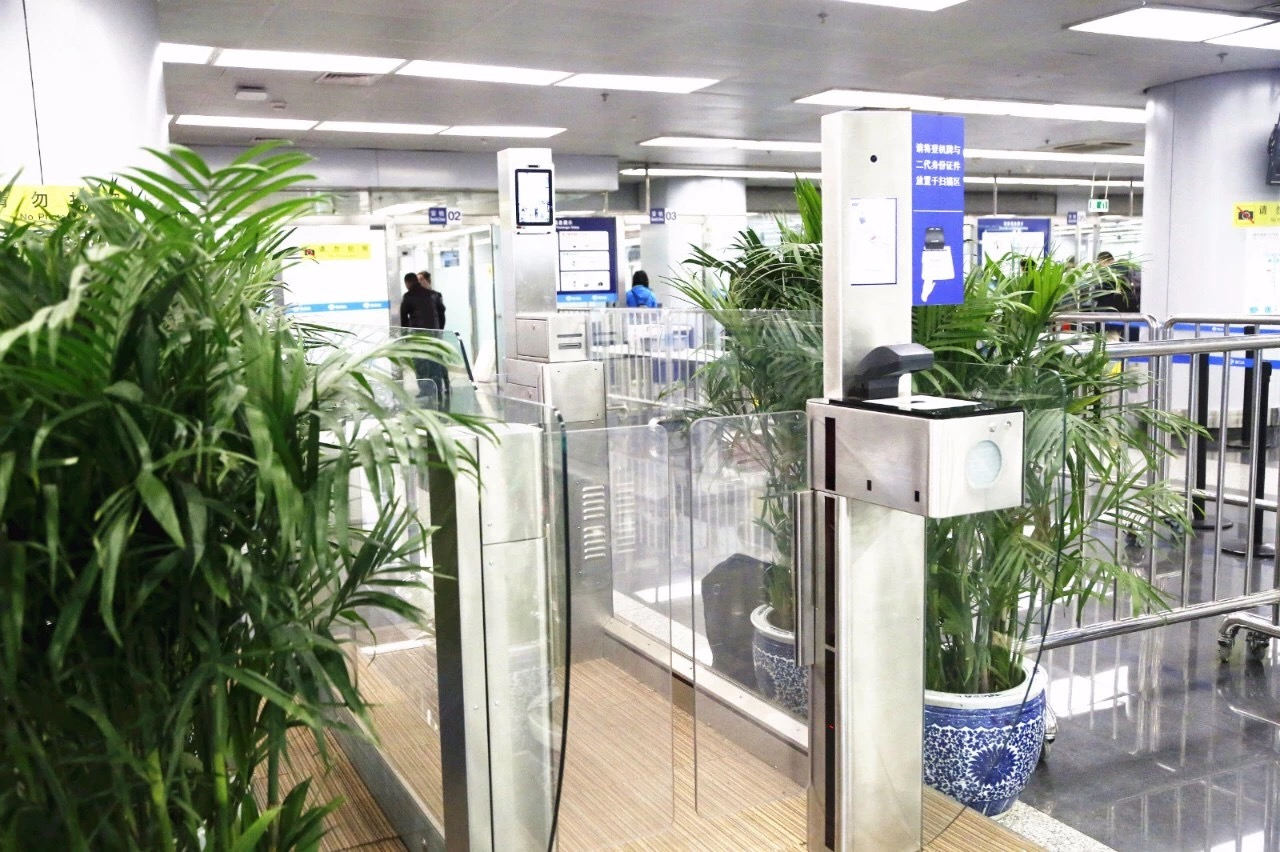
Facial recognition technology applied in the airport /VCG Photo
According to the Civil Aviation Administration of China, self-service check-in kiosks will have 86 percent coverage at the new Beijing airport.
The radio-frequency identification (RFID) baggage tracking system enables passengers and airport staff to check baggage status and location in a timely manner.
Chips on the RFID tag, which are attached to the items you want to track, can be read by the overhead doorway scanners as they pass through checkpoints.
The Wi-Fi indoor location technology provided by Huawei can help airport operators rapidly calculate passenger traffic and accordingly open or close the security check channels to improve operation efficiency.
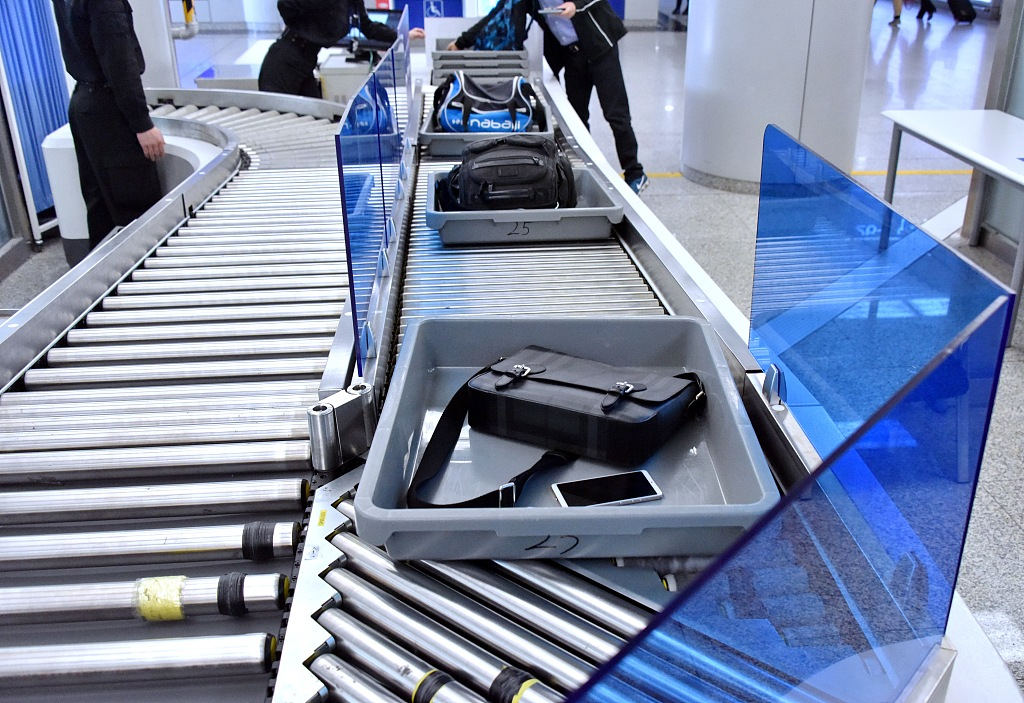
Smart security-checking equipment /VCG Photo
Next-generation robots in the airport
In the terminal of the new airport, 10 virtual interactive kiosks and just as many humanoid robots are ready to answer questions from passengers.
"These interactive kiosks are the upgraded version of the previous speech-recognizing robots. Based on 3D Portrait technology, the animated virtual assistant generated in the kiosk is able to have life-like conversations with passengers," said the project manager of Beijing Daxing International Airport's information management department.
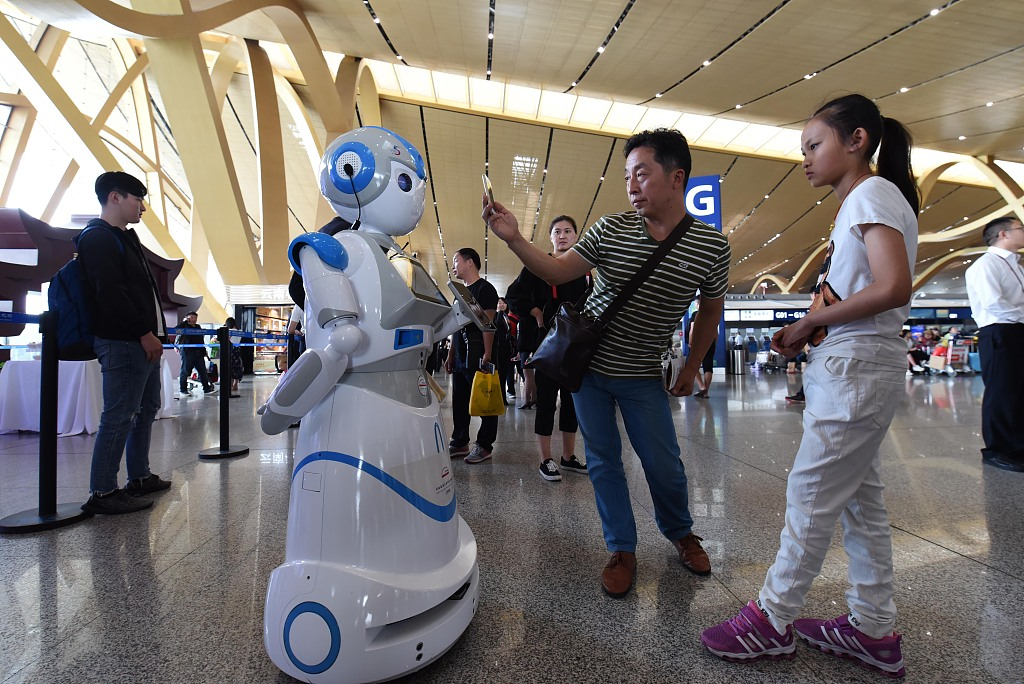
Next-generation robots in the airport /VCG Photo
"Besides basic information inquiry services, they are also equipped with automatic positioning functions. As long as passengers are in need, the kiosks will optimize for the best routes, directing them to their destination," he added.
What's more, sensor-embedded humanoid robots are are able to announce breaking news and major events.

Copyright © 2018 CGTN. Beijing ICP prepared NO.16065310-3
Copyright © 2018 CGTN. Beijing ICP prepared NO.16065310-3